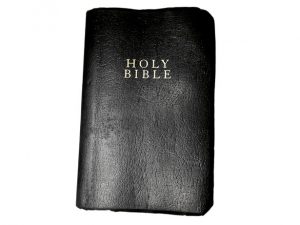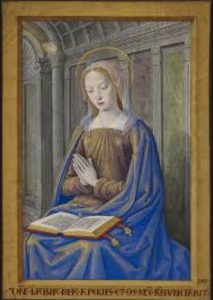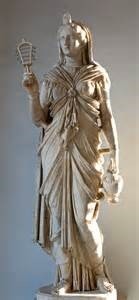Once in awhile, it’s an interesting exercise to explore the more obscure characters in early Christian literature. For moderns, an obscure character in an ancient religious document might seem far from important; she or he might well be the figment of someone’s imagination and the surrounding story a complete work of meaningless fiction. Here I would propose that examining the character of Salome in the New (Christian) Testament (NT) is both fascinating and informative on several levels and leads us into worlds of the healing power of women, the ministry of women, and the influence of paganism, especially the goddess, on early Christianity. When we learn about early Christianity, we learn more about ourselves in the West. 
First of all, there is not just one woman named Salome but three! All of these Salomes demonstrate the complex intersection between early Christianity and goddess worship, and all of them appear in early Christian art, which broadens our interest in different ways. In the NT, one Salome is mentioned in the Gospel of Mark 15:40 and 16:1, where she is one of the women who witness Jesus’ crucifixion; she may or may not be the mother of the disciples James and John (see Matthew 27:56). The ancient historian Josephus (37/38-ca. 100 CE) also identifies as “Salome” the daughter of Herodias and Herod Philip in Matthew 14:6-11 who danced before Herod the Great of Galilee, her grandfather, and asked for the head of John the Baptist.
We will discuss these two women in more depth below, but we will turn in some detail to the third Salome. In the extra-canonical literature (Christian literature that circulated ca. 120-250 CE) a Salome is the midwife who helps deliver Jesus. David Cartlidge and Keith Elliott in Art and the Christian Apocrypha set the scene for Salome the midwife from the Protevangelium [Infancy Gospel] of James:
[Salome] doubts that any woman could give birth to a child and still remain a virgin. She performs a gynecological examination of [Jesus’ mother] Mary, and, for her audacious disbelief, she suffers a withered hand. . . [She then] stretches forth her injured hand to the Virgin for help, confessing her sin, and, in her new-found belief, she is healed. (Cartlidge and Elliott, 90)
This scene appears several times in art from the fourth through sixth centuries (and later):
- a sarcophagus fragment from the late fourth century, now in Arles, France, with the Nativity of Christ on the top and the Magi (wise men) observing a star on the bottom (Salome appears in the nativity scene) (Cartlidge and Elliott, 17, figure 1.2);
- a fifth-century ivory pyxis (a box used during the Communion) from Syria, now in Werden bei Essen (Cartlidge and Elliott, 90);
- an ivory panel from the Throne of Bishop Maximianus of Ravenna, Italy, dated before the end of the fifth century (Lowrie, 156-58, pl. 85a); and
- an ivory plaque from the sixth century, now in Manchester, England (Cartlidge and Elliott, 90).
These images depict not only Salome’s sin, conversion and restoration to health but also the healing power of the Virgin Mary.  In other scenes, in which midwives bathe the infant Jesus, Jesus’ bath water heals; such depictions occur in most nativity scenes up to the Middle Ages:
In other scenes, in which midwives bathe the infant Jesus, Jesus’ bath water heals; such depictions occur in most nativity scenes up to the Middle Ages:
Usually, the bathing scene is in the lower center of the image, the “bathtub” is in the shape of a baptismal font, and one midwife is washing the cross-nimbed infant, while the other is pouring water (Cartlidge and Elliott, 90).
While there do not appear to be any specific texts describing this activity, the Arabic Infancy Gospel from the sixth century contains two narratives showing Jesus’ bath water healing sick people (Cartlidge and Elliott, 90, 92), and in Arabic 17, the inhabitants of the town admit, “There is no doubt that Joseph and Mary and this child are gods, not men” (Cartlidge and Elliott, 92). This type of “confession” is significant in showing that in some communities in antiquity believers revered not only Jesus as God but also Joseph and Mary, his earthly parents.
In addition, healing, and especially healing with water, was a vitally important aspect of most pagan cults in the early Christian era. Therefore, some early Christians through these stories may have been convinced that not only the Savior Jesus healed but also his Holy Mother. Research has shown that a powerful female deity with miraculous healing powers, closely linked with the healing power of the moist female deity of prehistoric times, would have resonated with early Christians. In the case of Jesus’ bath water, the healing power was appropriated by Jesus, yet the Father, Mother, Child Trinity formulation of Arabic 17, above, reflect the shared power dynamic between male and female.
If we now return to the two women named Salome in the NT, we can see additional interpretations and uses of the Jesus (and Mary) story as it developed through the centuries. Salome the woman who accompanied two women named Mary to Jesus’ crucifixion, can be viewed as one of “many other women” who were Jesus’ disciples during his ministry and remained loyal to him to the very end – in contrast to the male disciples, who stayed away from the cross (Malbon, 148).
With regard to Salome the daughter of Herodias, while her existence may be more fiction than fact (Kraemer, 148-49), the story depicted by Matthew may have served a particular purpose. According to Barbara Walker (885-86), the Dance of the Seven Veils originated in sacred drama connected with powerful female deities, generally Ishtar/Astarte or Isis.  The surrogate-king dies and descends to the underworld; the priestess – whose name was Peace/Shalom/ Salome/Irene – impersonates the goddess and passes through the seven gates in the temple of Jerusalem to retrieve him; the goddess has removed each of his veils at the seven gates. This removal symbolizes layers of earthly illusions as the deceased or initiate approaches the sacred mysteries.
The surrogate-king dies and descends to the underworld; the priestess – whose name was Peace/Shalom/ Salome/Irene – impersonates the goddess and passes through the seven gates in the temple of Jerusalem to retrieve him; the goddess has removed each of his veils at the seven gates. This removal symbolizes layers of earthly illusions as the deceased or initiate approaches the sacred mysteries.
 The beheading of John the Baptist, then, rather than an historical murder, may have paralleled “a common form of sacrificial death throughout the early Aegean and Levantine cultures.” Walker maintains that this story of Salome, with all its twists and turns in the Biblical and extra-canonical accounts, demonstrates “the survival of the Tammuz-Ishtar cult in Jerusalem, where someone periodically died in the role of the god, and the women raised the ancient lament for the victim in the temple.” The god in this case, according to Walker, was John the Baptist, and the story of the beheading reflects the beliefs of certain Christians, perhaps the Mandaeans of current southern Iraq and Iran, who may have been devoted to John, not Jesus, as the true sacrificed Christ.
The beheading of John the Baptist, then, rather than an historical murder, may have paralleled “a common form of sacrificial death throughout the early Aegean and Levantine cultures.” Walker maintains that this story of Salome, with all its twists and turns in the Biblical and extra-canonical accounts, demonstrates “the survival of the Tammuz-Ishtar cult in Jerusalem, where someone periodically died in the role of the god, and the women raised the ancient lament for the victim in the temple.” The god in this case, according to Walker, was John the Baptist, and the story of the beheading reflects the beliefs of certain Christians, perhaps the Mandaeans of current southern Iraq and Iran, who may have been devoted to John, not Jesus, as the true sacrificed Christ.
The story of Salome as the midwife may thus reflect a certain trajectory in the extra-canonical literature, perhaps promoted as a counterweight to the John the Baptist trajectory. Salome was not only the primary midwife who helped bring forth Jesus, the true savior, but also the one who didn’t believe, who was then healed and who ultimately became an effective evangelist, especially to women. Thus, in some contexts, Jesus was seen as the true Messiah, not John the Baptist, as demonstrated by Mary’s virginity; and Jesus and his mother – not John and the goddess – were the ones with the power to convert and heal.
With this one female name from the earliest years of Christianity – representing three different women – we can thus note several important points significant even today: Christianity’s great diversity of beliefs and practices, even as they all stem from the man Jesus; the importance of women in Jesus’ ministry and the evolving Christ cult through several centuries; the heritage of goddess worship, even in Christian communities; and the ways in which stories – whether true, mythological or fictitious – can evolve in different communities over time. Even if you are not Christian or do not have much interest in or regard for Christianity, it is a fact that Christianity had and still has an enormous impact on the West, and what we continue to learn about Christianity’s roots can help us to expand our understanding of the world.
Resources
Cartlidge, David R. and J. Keith Elliott. Art and the Christian Apocrypha. London and New York: Routledge, 2001.
Ferguson, Everett. Backgrounds of Early Christianity, 2nd ed. Grand Rapids: William B. Eerdmans Publishing Company, 1993.
Kraemer, Ross S. “Salome 2,” in Carol Meyers, Toni Craven and Ross S. Kraemer, eds. Women in Scripture: A Dictionary of Named and Unnamed Women in the Hebrew Bible, the Apocryphal/Deuterocanonical Books, and the New Testament, 148-49. Grand Rapids, MI, and Cambridge, England: William B. Eerdmans Publishing Company, 2000.
Lowrie, Walter. Art in the Early Church, revised ed. New York: W.W. Norton and Company, Inc., 1969.
Malbon, Elizabeth Struthers. “Salome 1,” in Carol Meyers, Toni Craven and Ross S. Kraemer, eds. Women in Scripture: A Dictionary of Named and Unnamed Women in the Hebrew Bible, the Apocryphal/Deuterocanonical Books, and the New Testament, 148. Grand Rapids, MI, and Cambridge, England: William B. Eerdmans Publishing Company, 2000.
Walker, Barbara G. “Salome,” The Woman’s Encyclopedia of Myths and Secrets, 885-86. San Francisco: Harper and Row, 1983.
